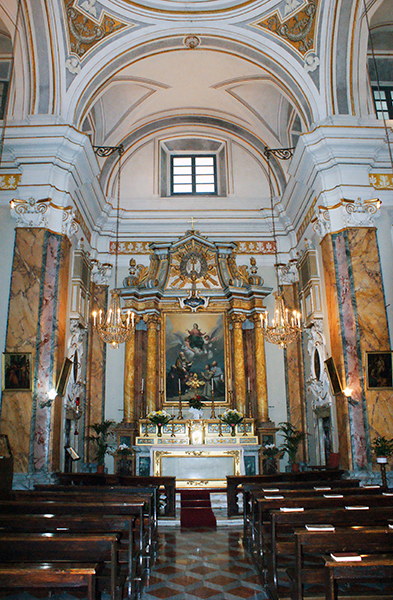
Card Author:
Location:
Date:
The church is located 100 kilometers from the tomb of Peter and was built between 1921 and 1924 by the architect Tullio Passarelli (Rome 1969-1941) who was a pupil of G. Koch and a member of Roman eclecticism. The opening of the new Church of the Body of the Lord near Cassia Street in Le Coste in Montefiascone led to the closure of the nearby ancient rural church of San Pancrazio (the oldest church in Montefiascone), which is now smaller and more difficult to reach.
Info: Parish 0761/826567
CHURCH OF THE BODY OF THE LORD (Corpus Domini)
HISTORY AND DESCRIPTION
The church is located 100 kilometers from the tomb of Peter and was built between 1921 and 1924 by the architect Tullio Passarelli (Rome 1969-1941) who was a pupil of G. Koch and a member of Roman eclecticism. Passarelli built many church buildings, among which is in the capital Santa Teresa on Corso Italia (1901), San Camillo on Sallustiana Street (1906-10), and important civic buildings such as warehouses of the river port. The opening of the new Church of the Body of the Lord near Cassia Street in Le Coste in Montefiascone led to the closure of the nearby ancient rural church of San Pancrazio (the oldest church in Montefiascone), which is now smaller and more difficult to reach. The new church building, a large neoclassical architecture, was impressive. The Church has a wide central nave with a square, closed laterally by two rectangular transepts with apses closed by curved lunettes and an apse area enclosed by a circular lunette. A large dome with eight wedges shut in the central nave. In 1965, due to structural problems the church was closed from worship. In 1980, the collapsing led to the total collapse of the dome and the side transepts. In just four years, the church underwent major restoration and was reopened for worship. The architect Orseolo Fasola, in an attempt to revive the building and keep the architecture from Passarelli unchanged, only changed the nave and transepts. Fasola also turned the dome and apses into a single ceiling. The restoration work carried out from 1980 to 1984 moved the altar, according to the new rules of Christian liturgy, 4 meters behind and apse remained intact.
Translation by Michelle Greif, University of Iowa, enrolled in the USAC Viterbo.











